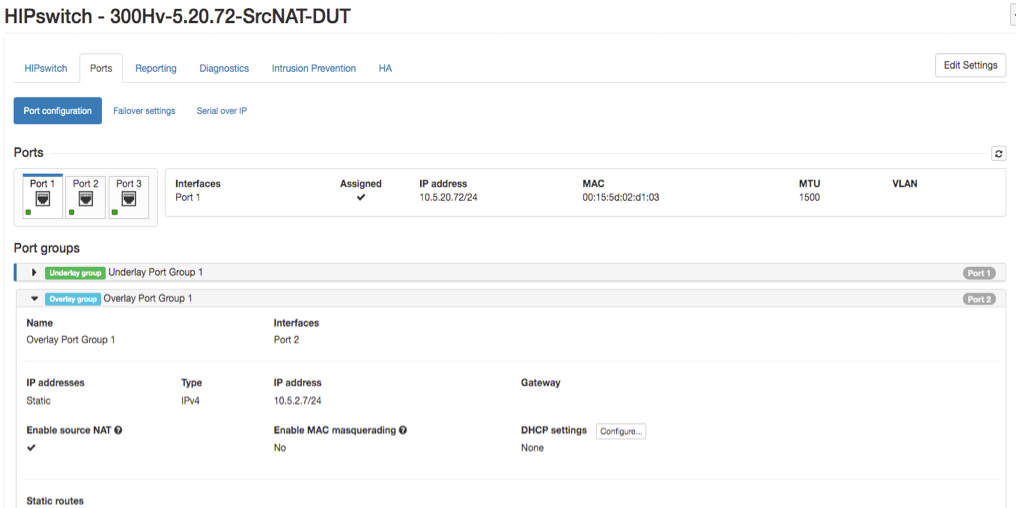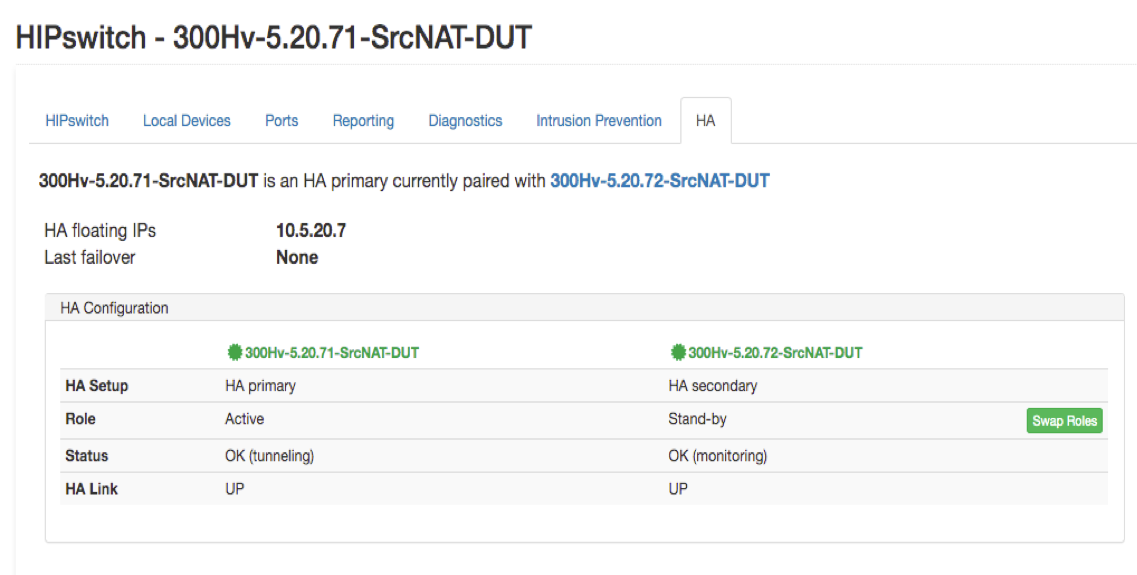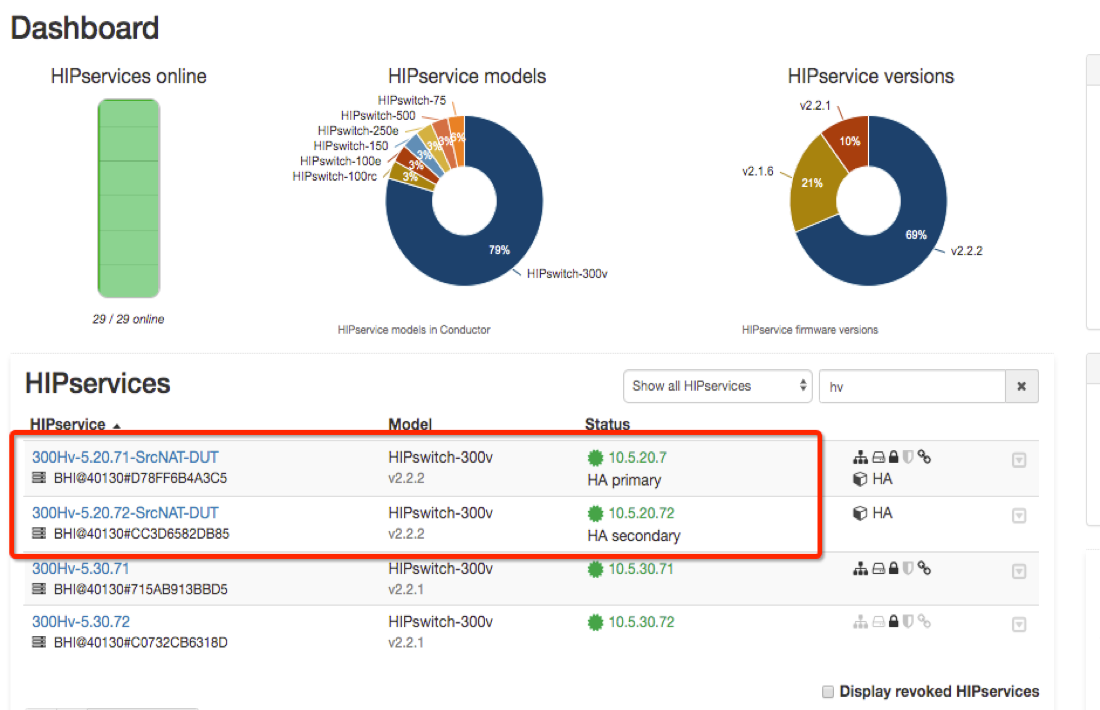Configure High Availability for V2.2 HIPswitches
Configuring high-availability (HA) HIPswitches provide redundancy in a hot-standby mode.
HIPswitches installed in an HA configuration maintain a heartbeat on a dedicated Ethernet link where only the current, primary HIPswitch is participating in overlay network communications. If the primary HIPswitch fails to send heartbeat messages to the secondary, the secondary takes over the overlay network communications for the HA pair.
Before You Begin
Before you configure a High-availability (HA) pair, you must:
- Have a Conductor installed
- Configure and connect the physical or virtual V2.2 HIPswitches you wish to configure for high availability. You need two physical or two virtual HIPswitches. See Set up physical HIPswitches for more information.
Note: Cloud HIPswitches do not
support HA at this time.
Create a High-availability HIPswitch pairing
To configure High-availability HIPswitches, you need to:
- For virtual HIPswitches only – Add an ethernet port
- Connect the HIPswitches
- Pair the HIPswitches for High Availability
- Make sure the Overlay Port Group settings match
1 For Virtual HIPswitches only – Add an ethernet port
2 Connect the HIPswitches
-
Select the primary HIPswitch and select
or add an HA Port Group
- At the top right of the Ports tab, select Edit Settings.
- Select an available HA Port Group, or, to create one, go to Ports and select an available port, and create an HA Port Group. The port group sets up a virtual connection between the HIPswitches you’re configuring as an HA pair. A virtual HIPswitch is expandable up to six (6) ports. You must configure one port for HA heartbeats with the HA role.
- Repeat step 1 with the secondary HIPswitch.
- If you are using physical HIPswitches, physically connect the primary to the secondary using an ethernet cable between the dedicated HA ethernet ports on both HIPswitches with an ethernet cable (so you have both a port and a physical connection between the two HIPswitches).
- If you are using virtual HIPswitches, connect the port created above to each other in the virtual network. See your Hypervisor instruction.
3 Pair the HIPswitches for High Availability
- Select the HA tab and click Edit Settings.
- Under Select a high-availability backup HIPswitch, select the secondary HIPswitch.
- Under IP address, enter an available IP address to act as the shared HA IP address for the High Availability pair (see note below). You may need to select a Primary port group as well.
- Click Update Settings.
- If you want to swap the primary HIPswitch with the secondary one, go to the HA tab, and by Role, select Swap Roles.
4 Make sure the Overlay Port Group settings match
- Check the Overlay Port Group of your primary HIPswitch for an IP address or any other configured settings (such as DHCP, source NAT, etc).
-
If there are settings there, copy them to the standby HIPswitch's
Overlay Port group.

Test the High-Availability Pair

You can also see that the HIPswitches are paired on the Dashboard.

Remove a High-Availability Pairing
- In the primary HIPswitch, on the HA tab, click Edit Settings.
- Click Remove HA pairing.
